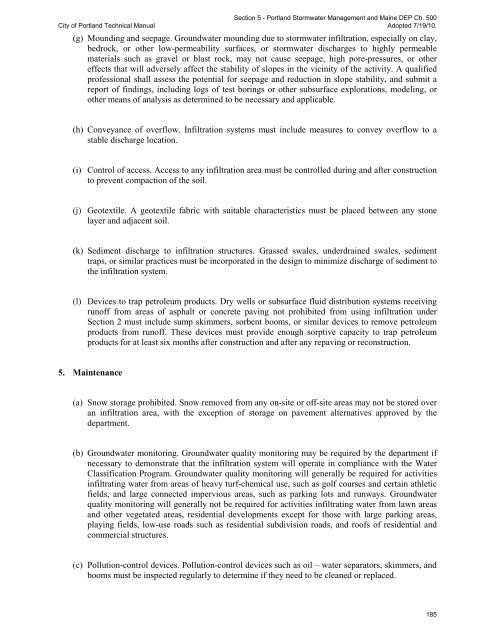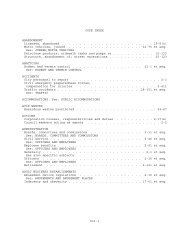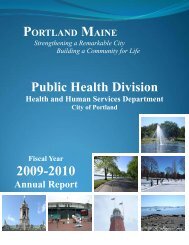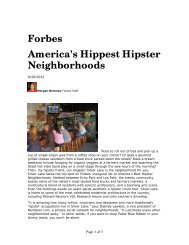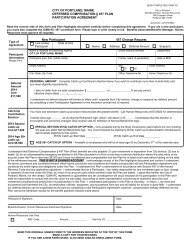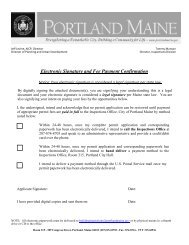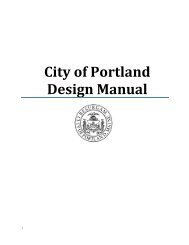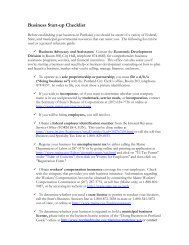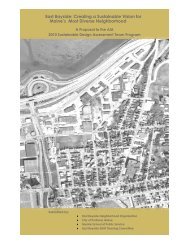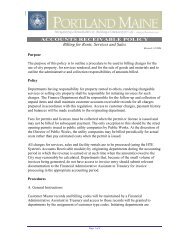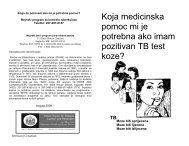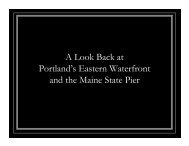City of Portland Technical Manual
City of Portland Technical Manual
City of Portland Technical Manual
Create successful ePaper yourself
Turn your PDF publications into a flip-book with our unique Google optimized e-Paper software.
<strong>City</strong> <strong>of</strong> <strong>Portland</strong> <strong>Technical</strong> <strong>Manual</strong><br />
Section 5 - <strong>Portland</strong> Stormwater Management and Maine DEP Ch. 500<br />
Adopted 7/19/10.<br />
(g) Mounding and seepage. Groundwater mounding due to stormwater infiltration, especially on clay,<br />
bedrock, or other low-permeability surfaces, or stormwater discharges to highly permeable<br />
materials such as gravel or blast rock, may not cause seepage, high pore-pressures, or other<br />
effects that will adversely affect the stability <strong>of</strong> slopes in the vicinity <strong>of</strong> the activity. A qualified<br />
pr<strong>of</strong>essional shall assess the potential for seepage and reduction in slope stability, and submit a<br />
report <strong>of</strong> findings, including logs <strong>of</strong> test borings or other subsurface explorations, modeling, or<br />
other means <strong>of</strong> analysis as determined to be necessary and applicable.<br />
(h) Conveyance <strong>of</strong> overflow. Infiltration systems must include measures to convey overflow to a<br />
stable discharge location.<br />
(i) Control <strong>of</strong> access. Access to any infiltration area must be controlled during and after construction<br />
to prevent compaction <strong>of</strong> the soil.<br />
(j) Geotextile. A geotextile fabric with suitable characteristics must be placed between any stone<br />
layer and adjacent soil.<br />
(k) Sediment discharge to infiltration structures. Grassed swales, underdrained swales, sediment<br />
traps, or similar practices must be incorporated in the design to minimize discharge <strong>of</strong> sediment to<br />
the infiltration system.<br />
(l) Devices to trap petroleum products. Dry wells or subsurface fluid distribution systems receiving<br />
run<strong>of</strong>f from areas <strong>of</strong> asphalt or concrete paving not prohibited from using infiltration under<br />
Section 2 must include sump skimmers, sorbent booms, or similar devices to remove petroleum<br />
products from run<strong>of</strong>f. These devices must provide enough sorptive capacity to trap petroleum<br />
products for at least six months after construction and after any repaving or reconstruction.<br />
5. Maintenance<br />
(a) Snow storage prohibited. Snow removed from any on-site or <strong>of</strong>f-site areas may not be stored over<br />
an infiltration area, with the exception <strong>of</strong> storage on pavement alternatives approved by the<br />
department.<br />
(b) Groundwater monitoring. Groundwater quality monitoring may be required by the department if<br />
necessary to demonstrate that the infiltration system will operate in compliance with the Water<br />
Classification Program. Groundwater quality monitoring will generally be required for activities<br />
infiltrating water from areas <strong>of</strong> heavy turf-chemical use, such as golf courses and certain athletic<br />
fields, and large connected impervious areas, such as parking lots and runways. Groundwater<br />
quality monitoring will generally not be required for activities infiltrating water from lawn areas<br />
and other vegetated areas, residential developments except for those with large parking areas,<br />
playing fields, low-use roads such as residential subdivision roads, and ro<strong>of</strong>s <strong>of</strong> residential and<br />
commercial structures.<br />
(c) Pollution-control devices. Pollution-control devices such as oil – water separators, skimmers, and<br />
booms must be inspected regularly to determine if they need to be cleaned or replaced.<br />
185


